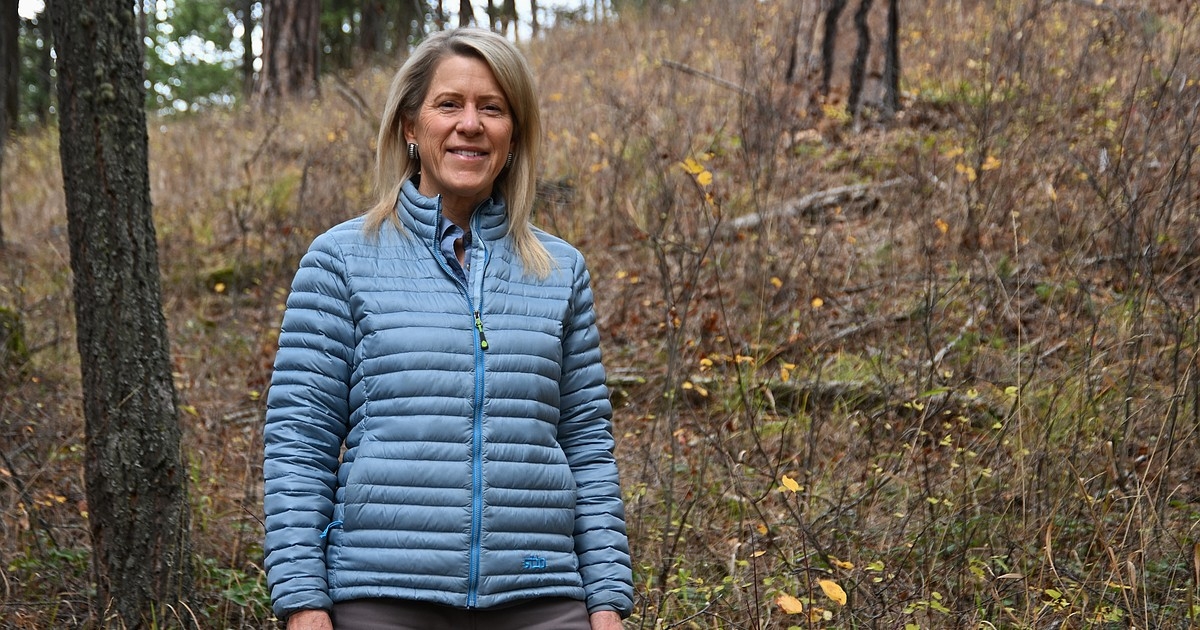Description
The whitebark pine is a testament to strength.
Growing high on alpine ridges, where few other trees can survive, the whitebark pine persists. Its gray-white bark bleaches in the harsh summer sun and twists against hurricane-force winds. Gnarled roots clench tight to rocky ridgeline soils, even in the deepest of snows.
“It’s such an iconic tree. It’s like the stalwart soldier that can withstand all this stuff Mother Nature throws at it,” retired silviculturist Melissa Jenkins said. “Just its tenacity. It’s so inspiring.”
Like the tree, Jenkins is steadfast, perhaps a bit headstrong. She spent the better part of a four-decade career in the U.S. Forest Service studying, growing and planting whitebark pine trees at a time when the species faced widespread decline. Even in her retirement, the “Lorax of whitebark,” as colleagues are wont to call her, has been an instrumental voice in the restoration and conservation of the high-alpine pine.
Whitebark pines play a central role in ecosystems across the Rocky Mountain West. Their large nutrient-packed seeds are a staple in the pre-hibernation diets of grizzly bears and squirrels, as well as a perennial food source for birds like the Clark’s nutcracker. Evergreen canopies provide year-round shade that slows snowmelt while roots hold on to soil and help stabilize cliffsides.
The ongoing decline of whitebark pines threatens not only the trees themselves, but all these essential functions. Researchers estimate that more than half of all standing whitebark pine trees in the United States are dead. In some areas, including Glacier National Park, mortality rates have climbed higher than 90%.
Bark beetle outbreaks and changing fire regimes play a role in the sudden decline, but the main killer is an invasive fungus called white pine blister rust. Infected trees are often “flagged” with strips of red needles before the fungus spreads to the trunk in the form of yellow-orange cankers. The rust spreads inward, “suffocating” the tree by cutting the canopy off from its supply of water and nutrients.
“It’s heartbreaking to see the rust,” Jenkins said. "I feel like we're obligated to do our best to restore [the whitebark pine], to get it back on the ecosystem.”
THERE MAY be no better person for that task than Jenkins. Even as a child, she had a green thumb and a penchant for plants. At 10 years old, she begged her parents to let her scrape up a patch of their Midwestern backyard for a vegetable garden. Her senior yearbook photo featured the caption, “Plans to go into forestry.”
But it wasn’t until 1991 that Jenkins caught what she jokingly referred to as “whitebark fever.” By then, she had already spent eleven seasons on the Caribou-Targhee National Forest in Idaho, doing everything from surveying timber to fighting wildfires. A colleague who specialized in wildlife biology approached Jenkins with a new project.
In 1988, massive wildfires ripped through the Greater Yellowstone Ecosystem, incinerating about 28% of the national park’s whitebark pines. The biologist wanted to plant whitebark pine seedlings at the burned sites, but growing the trees was proving to be challenging. Nearly every single seed the biologist planted that year died without germinating.
“Back then, we really didn’t know much about what we were doing,” Jenkins said. “It wasn’t whitebark’s fault. It was our fault for not knowing.”
And Jenkins wanted to know. When the next bumper crop occurred in 1996, she was ready with a bucket truck borrowed from a local electric company. Her team harvested thousands of cones, and Jenkins spent most of the winter bent over a tray, painstakingly prying each seed from the sap-soaked scales.
This time, the hard work paid off. A few years later, 85% of the seeds had germinated and were ready for replanting. Jenkins tucked the tender shoots into their new homes.
She visited often to take note of which trees flourished and which seemed to suffer from too much sunlight or too few nutrients. She learned that seedlings planted on the northeast side of logs and rocks grew better than those planted on the southwest side and that whortleberry catalyzed growth while the tough fibrous roots of beargrass suffocated the young trees.
Each discovery paved the way for more planting projects, not only in the Caribou-Targhee National Forest, but throughout the Greater Yellowstone Ecosystem. A few years after undertaking her first whitebark pine planting project, Jenkins penned the first comprehensive restoration strategy for the region.
“Up until then, we really had no plan forward,” she recalled.
WITH THE future of the Greater Yellowstone Ecosystem’s whitebark pines cemented in writing, Jenkins moved on to a new position as a silviculturist with Flathead National Forest. Northwest Montana's cool, moist climate had long made it the epicenter for the white pine blister rust outbreak.
Jenkins admitted that working in a forest nearly devoid of whitebark pines was often dismal, but she also saw hints of hope amidst the carnage. With such high rates of blister rust infection, it was likely that surviving trees harbored some genetic resistance to the fungus.
Jenkins and her team scoured ridgelines in search of these so-called “plus trees.” In the fall, they returned to harvest cones from the top branches, which were then shipped to a nursery in Coeur d’Alene for cultivation. Staff dusted the resulting seedlings with fungal spores to test whether they had inherited their parents’ genetic resistance.
Those that passed were sent to nearby national forests for planting projects or repurposed as rootstock to grow more resistant whitebark pines. It typically takes 25-30 years for a whitebark pine to produce cones, but researchers discovered they could expediate that process by grafting the branch of a “plus tree” onto the roots of a five-year-old sapling. The resultant Frankenstein trees started producing cones as soon as the next year.
In between scouting missions to discover new seed sources, Jenkins coordinated with researchers at Glacier National Park, the Confederated Salish and Kootenai Tribes and the Crown Managers Partnership to pilot restoration programs in the Crown of the Continent. The groups’ first restoration plan, written in 2016, continues to be used as a blueprint for whitebark pine restoration work across the Rocky Mountain West.
Jenkins officially retired from the U.S. Forest Service in 2020, but her dedication to the whitebark pine persists. She currently serves as the secretary of the Whitebark Pine Ecosystem Foundation, a nonprofit which she helped found in 2000, and she is currently consulting with the U.S. Fish and Wildlife Service to draft a nationwide restoration plan for whitebark pine after the trees were designated as a threatened species in 2022.
It is unlikely Jenkins will reap many of the benefits of her work. Whitebark pines are notoriously long-living and slow-growing. Trees she planted at the beginning of her career are only now reaching maturity. But Jenkins’ hope for the species also runs deep.
"The true meaning of life is to plant trees under whose shade you do not expect to sit,” she said, referring to her favorite quote from Nelson Henderson. “That’s us. We’re out there. Those trees are out there 50, 60 years before they ever produce cones. Yet, we plant the seedlings, we kind of wish them well on their journey, and we see the future of whitebark pine growing well in these ecosystems.”
Reporter Hailey Smalley can be reached at 758-4433 or [email protected].
News Source : https://dailyinterlake.com/news/2025/nov/24/silviculturist-plants-seeds-of-hope-for-threatened-species/
Other Related News
11/25/2025
More than 500 volunteer speech and debate judges are needed for the Western Regional T...
11/25/2025
A woman found inside a Kalispell area home by a tenant earlier this month is facing a fel...
11/25/2025
HELENA Mont Carroll College announced the historic appointment of Jennifer Glowienka PhD ...
11/24/2025
HELENA Mont - A gunshot victim is in critical condition after being shot by a man in Helen...
11/23/2025












